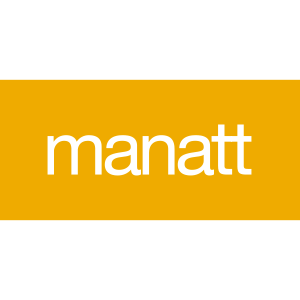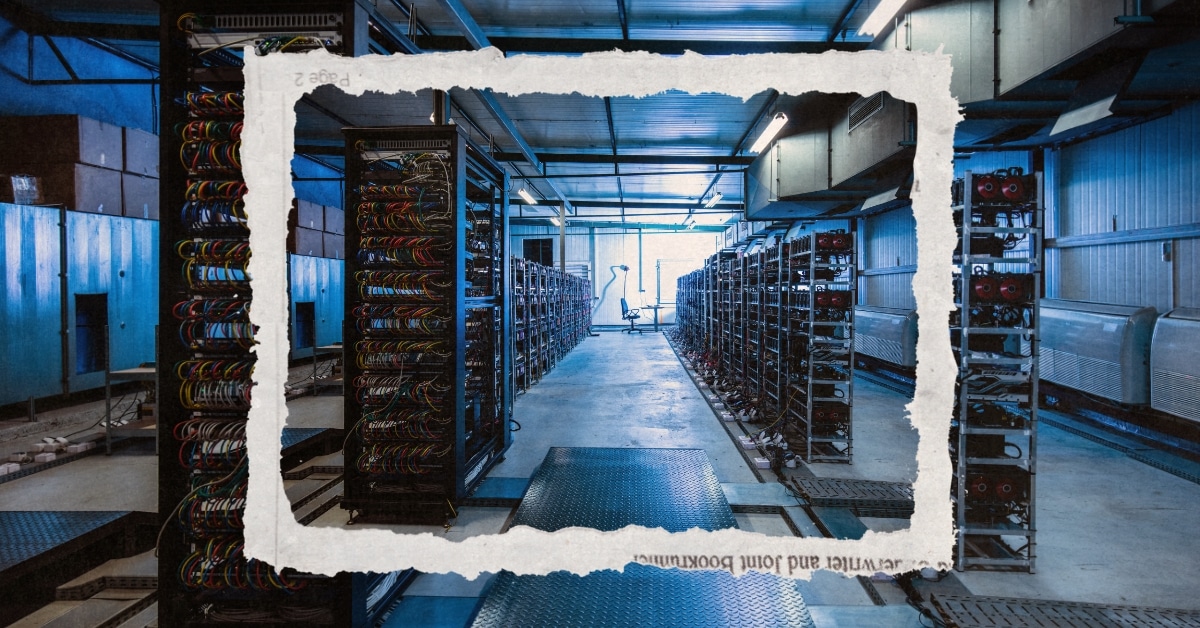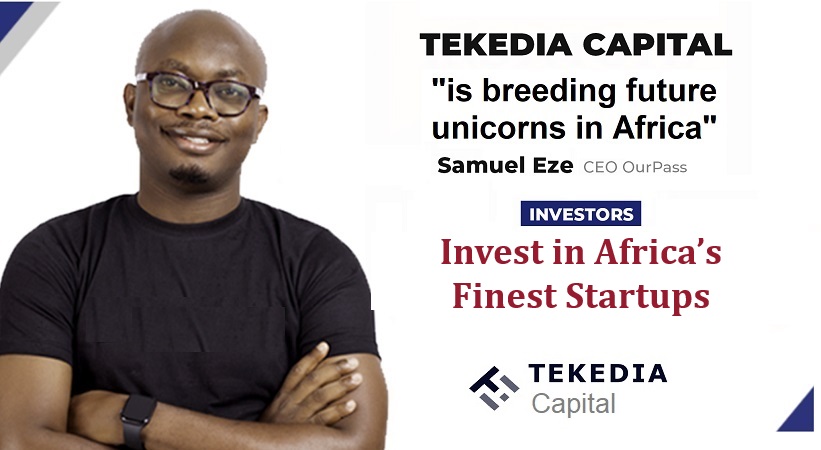News
The House approves the cryptocurrency law which promises regulatory clarity

After many iterations over the years in attempting to regulate the cryptocurrency industry, the House of Representatives passed the Financial Innovation and Technology for the 21st Century Act, or FIT21 Act, on May 22, 20241. The bipartisan vote was 279-136 .
This legislation marks a considerable milestone in the creation of a U.S. regulatory framework for the digital assets market and, compared to bipartisan and bicameral attempts in previous years, shows the most promise of becoming law. After years of industry complaints about the lack of a way to comply with the previous US framework, this step signals Congress’ commitment to bringing stability to the digital asset market.
The bill was sponsored by Glenn Thompson (R-PA) and co-sponsored by a politically diverse bipartisan coalition that includes several members who have long supported legislative solutions to many of the digital asset challenges: French Hill (R-AR ), Patrick McHenry (R-NC), Tom Emmer (R-MN), and Ritchie Torres (D-NY).
Key Provisions
First, the bill aims to clearly define cryptocurrencies by classifying them based on whether they are a currency, a commodity, a security, or another form of digital asset. The categorization is crucial as it describes how cryptocurrency is governed. FIT21 adds definitions to the Securities Act of 1933 for terms such as “Blockchain,” “Decentralized,” and “Digital Asset.” The Howey2 test for determining whether an item is a security has not been eliminated, however a new Howey “carve out” has been incorporated into the definition of “Digital Asset” which is clearly designed to give issuers greater clarity in executing their projections:
“(E) TREATMENT OF CERTAIN DIGITAL ASSETS SOLD UNDER AN INVESTMENT AGREEMENT.—A digital asset offered or sold or intended to be offered or sold under an investment agreement is not and does not become a security upon sale or otherwise transferred under such investment agreement.” (emphasis added)
But of course it could still be a security, so the SEC is still somewhat in the driver’s seat in determining the status of the security and pursuing enforcement cases. This is in response to litigation in which the judge ruled that tokens became securities based on the way they were offered.3 The FIT21 law is designed to send a message to the SEC that it should not pursue cases against decentralized blockchain tokens and Section (E ) above is a rather weak safe harbor.
The legislation also seeks to establish a structure that divides regulatory responsibility between the Securities and Exchange Commission (SEC) and the Commodity Futures Trading Commission (CFTC). If the digital asset is classified as a “Security” or “Restricted Digital Asset,” the SEC will supervise it, while digital assets classified as commodities and derivatives will fall under the jurisdiction of the CFTC.
The allocation between regulatory bodies depends on factors such as how decentralized the digital asset is on the blockchain system, the process of acquiring the digital asset, and who holds the asset (for example, a developer or an exchange). While assigning separate regulatory responsibilities, the legislation also seeks to strengthen regulatory cooperation by mandating both agencies to formulate joint regulation. This framework allows entities to register with both agencies and alleviate compliance challenges.
In addition to establishing a classification process, the legislation also introduces a certification process that allows an individual to file a certification that a blockchain system has met the criteria required to qualify as a “Decentralized System.” If the SEC does not deny the request within the 60-day review period, the blockchain system will be certified as a decentralized system and therefore subject to CFTC-style regulations rather than the SEC.
Finally, the legislation includes consumer protection in its regulatory framework. For example, FIT21 requires both the SEC and the CFTC to establish additional anti-fraud rules on digital assets beyond the anti-fraud protections imposed under the existing regulatory framework under securities and commodity derivatives laws.
Collectively, the FIT21 Act seeks to bridge regulatory gaps between traditional regulatory frameworks and new emerging technologies. Not surprisingly, SEC Chairman Gary Gensler opposes the law, saying the bill would create additional regulatory loopholes, particularly by excluding investment contracts from the definition of “security” if created on a blockchain.4
Because matter?
- The FIT21 Act is designed to eliminate the SEC’s claws to some extent and provide legislative clarity to the status of digital assets. Much blood (and legal fees) has been shed over the past decade in deciphering exactly which regulatory regime applies to a particular offering by a digital asset company. Most professionals took it for granted that securities laws were enforced, but the new legislation, if passed, would improve this view somewhat.
- The SEC and CFTC have sometimes argued over jurisdiction in this area. This has been further complicated by separate enforcement proceedings by state attorneys general and state financial services and securities regulators. The FIT21 law outlines the division of labor between the two agencies.
- The FIT21 Act is the most ambitious legislative initiative to bring order and clarity to the digital asset space. As with many financial regulations, much is left to the agency’s discretion based on the facts and circumstances of a particular offering. However, the FIT21 law at least updates and modernizes the tools so that the laws do not seem almost a century old and apply to completely different technologies than those of companies today.
- Among the bill’s supporters were nearly all the Republicans who voted in the House and many Democrats. Most far-left Democrats voted no, but many moderates and Democrats from high-tech areas voted in support of the bill (anecdotally, Marjorie Taylor Greene and Adam Schiff both voted “Yes”).
What comes next?
While House approval is a significant achievement, the FIT21 bill will then go to the U.S. Senate for consideration and a vote and then, if it passes, to the White House. There may be upcoming revisions to the legislation, as it fails to specifically address some of the issues relating to decentralized finance. If you have any questions about the above, please feel free to contact one of the authors or the Manatt professional you work with.
1 The FIT21 law is called HR 4763 and the text of the law and procedural history can be found here: Text – HR4763 – 118th Congress (2023-2024): Financial Technology and Innovation for the 21st Century Act | Congress.gov | Library of Congress
2 See SEC v. W. J. Howey Co., 328 US 293 (1946).
3 See SEC v. Ripple Labs, Inc. et.al. (SDNY 2024). https://www.sdnyblog.com/files/2023/07/20-CIv.-10832-2013.07.13-Ripple-SJ-Ruling.pdf AND Both the SEC and Ripple claim victory in a major securities decision.
News
US Cryptocurrency Rules Delayed by ‘Never-Ending’ Lawsuits

Ripple CEO says cryptocurrency industry still seeking regulatory clarity from US
Speaking to Bloomberg News on Wednesday (July 17), Author: Brad Garlinghouse he said America is behind behind other countries which have already adopted cryptocurrency regulations.
“What we’re seeing, where it’s the UK, Japan, Singapore… even the European Union, more than two dozen countries have come together to provide a framework for cryptocurrency regulation,” Garlinghouse said.
“It’s frustrating that we as a country can’t get that regulatory framework in place. And instead, we have this never-ending lawsuit coming from the SEC that doesn’t really address the problem.”
Ripple has been the target of some of these legal disputes. Securities and Exchange Commission (SEC) sued the company in 2020, accusing it of conducting a $1.3 billion operation offering of unregistered securities tied to its XRP token.
However, last year a judge ruled that only Ripple’s institutional sales of XRP, not retail sales, violated the law, a decision widely seen as a victory for the cryptocurrency industry.
As PYMNTS noted at the time, that ruling has “far-reaching repercussions impact across the digital asset ecosystem, which has long maintained that its tokens do not represent securities contracts.”
However, Garlinghouse told Bloomberg on Wednesday that the company cannot wage multimillion-dollar legal battles over each token.
He spoke to the news agency from the Republican National Convention in Milwaukee, where the party is backing the candidacies of former President Donald Trump and Ohio Sen. J.D. Vance, both of whom are considered pro-cryptocurrency.
But Garlinghouse argued that cryptocurrencies “should not be a partisan issue,” and noted that he had recently attended a conference in Washington that included Democrats, including White House officials.
“I think they were there, listening to the industry… it was refreshing to start having that conversation,” she said.
President Joe Biden earlier this year he vetoed a measure which would have ended the SEC’s special rules for crypto-asset custodians. This legislation was supported by both the digital asset industry and the banking industry.
Ripple early this year donated $25 million to the cryptocurrency industry’s super PAC Fair Smoothiewith Garlinghouse stating at the time that such donations would continue every year, as long as the industry had its detractors.
Second Open SecretsWhich monitor spending For campaigns, the PAC has spent $13.4 million this year, much of it to help defeat Rep. Katie Porter’s (D-Calif.) U.S. Senate campaign.
News
The Future of Cybersecurity in the Cryptocurrency Industry

The cryptocurrency space has had a tumultuous journey, with its fair share of ups and downs. As we look to the future, one area that remains a constant focus is cybersecurity. The digital nature of cryptocurrencies makes them inherently vulnerable to cyber threats, and as the industry evolves, so does the landscape of potential risks.
In 2022, the cryptocurrency market faced significant challenges, with over $2 trillion in market value lost. This event served as a wake-up call for the industry, highlighting the need for robust cybersecurity measures. The future of cryptocurrency security is expected to see a shift towards more regulated and established institutions taking the reins of crypto technology and blockchain infrastructure.
The decentralized nature of cryptocurrencies offers numerous benefits, such as transparency and financial inclusion. However, it also introduces unique security challenges. The risk landscape is filled with threats such as hacking, phishing, ransomware attacks, malware, and social engineering. These threats not only lead to financial losses, but also damage the reputation and trust within the cryptocurrency ecosystem.
Mini-MBA Tekedia edition 15 ((September 9 – December 7, 2024) started recordings; Register today for discounts reserved for early bird customers.
Tekedia AI in Business Masterclass Opens registrations Here.
Join the Tekedia Capital Syndicate and IInvest in Africa’s best startups Here.
The decentralized nature of cryptocurrencies offers many benefits, but it also presents unique security challenges. Cyber risks such as hacking, phishing, and ransomware pose threats to the integrity of digital assets. The infrastructure that supports cryptocurrencies is not immune to vulnerabilities, including smart contract flaws and exchange hacks.
To address these vulnerabilities, the infrastructure that supports cryptocurrencies must be strengthened. Smart contract vulnerabilities, exchange hacks, wallet breaches, and flaws in the underlying blockchain technology are significant concerns that must be addressed to ensure the security and integrity of digital assets.
As cybercriminal tactics and techniques become more sophisticated, the cryptocurrency industry must stay ahead of the curve. The future will likely see more targeted attacks, exploiting weaknesses in infrastructure, networks, and human factors. This requires a proactive and multifaceted approach to cybersecurity.
To mitigate these risks, several measures must be adopted:
Strengthening security measures: Developers, exchanges, and wallet providers must improve security protocols, use strong encryption, implement multi-factor authentication, and conduct regular security audits.
Education and awareness: Users should be educated on best practices for protecting their digital assets, including using strong passwords, recognizing phishing attempts, and using hardware wallets for secure storage.
Looking ahead, the cryptocurrency industry is expected to see an increased focus on robust security measures. Blockchain projects and exchanges are likely to invest in advanced encryption techniques and decentralized storage solutions to protect user assets. The future impact of cyber risk on cryptocurrencies will depend on the collective efforts of stakeholders to address vulnerabilities and strengthen security measures.
Collective efforts by stakeholders in the cryptocurrency space are crucial to address vulnerabilities and strengthen security measures. While challenges persist, advances in cybersecurity technologies and practices offer hope for a more secure and resilient cryptocurrency ecosystem.
The future of cybersecurity in the cryptocurrency industry depends on finding a balance between innovation and regulation. It requires a collaborative effort from all parties involved, from developers to end users, to create a secure environment that fosters trust and growth in the industry. As we move forward, it is critical that lessons learned from past events guide the development of stronger security measures, ensuring the longevity and stability of cryptocurrencies as a vital part of the modern economic toolkit.
Like this:
Like Loading…
News
Bullish XRP and RLBK price predictions rise, outpacing the broader cryptocurrency market, prompting Shiba Inu holders to switch!

Bitcoin’s one-week surge from $60,000 has pushed other cryptocurrencies into an uptrend. However, for many altcoins, this trend has been temporary. Altcoins such as XRP and Shiba Inu (SHIB) have experienced price drops. However, Rollblock, a new altcoin on the Ethereum blockchain, has thrived during this period, attracting thousands of investors looking for long-term growth.
XRP’s Nearly 30% Growth Over Last Week Drops as Selling Pressure Increases
XRP is seeing further price decline as Ripple investors withdraw their profits from the token. The surge in XRP’s price to $0.64 in the past week has provided investors with a perfect opportunity to increase their returns in the short term. With the ongoing sell-off in XRP, XRP has jumped over 8% in the past day and is now trading at $0.59. However, analysts tracking XRP indicators predict that XRP could still extend its gains by over 30% in the coming weeks.
Shiba Inu (SHIB) marks its third consecutive day of losses
Shiba Inu (SHIB) is in a period of adjustment after a week of strong gains. In the last 24 hours, SHIB has seen a jump of over 7%, reflecting a natural market fluctuation. Analysts are observing a death cross on the Shiba Inu chart, which historically signals the potential for future opportunities as the market stabilizes. As investors explore new possibilities, some are diversifying into promising altcoins like Rollblock (RBLK) to strategically rebalance their portfolios and capitalize on the emerging trend.
Rollblock (RBLK) Up Another 7% as New Investors Join Pre-Sale
Rollblock (RBLK) has taken the cryptocurrency market by storm, having attracted investors from more popular altcoins like Shiba Inu (SHIB) and XRP. Rollblock’s growth is attributed to its utility in the $450 billion global gaming industry.
Rollblock aims to use blockchain technology to bridge the gap between centralized and decentralized gambling. With blockchain technology, Rollblock secures every transaction in its online casino, providing transparency and convenience to millions of players who are uncomfortable placing bets on other iGaming platforms.
This innovative use of blockchain technology in the industry has grown Rollblock to over 4,000 new users in less than two months. With plans to add sports betting, this number is expected to grow exponentially in Q3.
Rollblock uses a revenue sharing model that splits up to 30% of its casino’s weekly profits with token holders. This happens after Rollblock buys back $RBLK from the open market and uses half of it for rewards. The other half is burned to increase the price of $RBLK.
Rollblock price has seen four increases in the past month with $RBLK tokens now selling for $0.017. Analysts predict that at the current growth rate, Rollblock could increase by over 800% before the presale ends. For investors looking for a long-term token with growth potential, phase four is the best time to buy Rollblock before its price skyrockets!
Discover the exciting Rollblock (RBLK) pre-sale opportunities now!
Website:https://Rollblockpresale.io/
Social: https://linktr.ee/Rollblockcasino
No spam, no lies, just insights. You can unsubscribe at any time.
News
Texas Crypto Miners Turn to AI as Crypto Declines

As cryptocurrency mining becomes less profitable, Texas cryptocurrency mining companies are switching to supporting artificial intelligence companies.
Bitcoin miners, with their sprawling data centers and access to significant energy resources, are ideally suited for computationally intensive AI operations, and as cryptocurrency mining becomes less profitable, companies see this shift as a logical answer to their problems.
On Thursday, Houston-based Lancium and Denver-based Crusoe Energy Systems announced a multibillion-dollar deal to build a 200-megawatt data center near the West Texas city of Abilene to support advanced artificial intelligence applications such as medical research and aircraft design, CNBC reported. The plant represents the first phase of a larger 1.2 gigawatt project.
Lancium and Crusoe’s move into AI mirrors a broader trend among bitcoin miners. The combined market capitalization of the top U.S.-listed bitcoin miners hit a record $22.8 billion in June. Companies like Bit Digital and Hut 8 are diversifying into AI, with Bit Digital securing a $92 million annual revenue deal to supply Nvidia GPUs and Hut 8 raising $150 million to expand its AI data center.
But the growing popularity of these operations also presents challenges, particularly for the Texas power grid. Last month, the Electric Reliability Council of Texas announced that the state is expected to nearly double its energy production by 2030 to meet the high energy demands of data centers and cryptocurrency operations.
Lieutenant Governor Dan Patrick expressed concern about the projections.
“Cryptocurrency miners and data centers will account for more than 50% of the additional growth. We need to take a close look at these two sectors,” He wrote on Twitter/X. “They produce very few jobs compared to the incredible demands they place on our network. Cryptocurrency miners could actually make more money selling electricity to the network than they do from their cryptocurrency mining operations.”
Analysts predict significant growth in data center power capacity, which is expected to account for up to 9% of U.S. electricity consumption by 2030.
The operations also pose challenges for nearby cities. Earlier this month, TIME reported that a crypto-mining facility was seriously compromising the health of residents in the city of Granbury. TIME reported more than 40 people with serious health problems, including cardiovascular disease, high blood pressure and hearing loss. At least 10 of the residents needed to go to the emergency room or an urgent care facility.
The disturbances were caused by the extreme noise generated by the crypto-mining facility’s fans, which are used to keep the machines cool. While the proposed data center in Abilene would use liquid cooling systems, it’s still unclear whether the facility’s operations would pose a health risk to local residents.
-

 Nfts1 year ago
Nfts1 year agoShardLab Launches ZK-Based Tool for Digital Identity and NFT Vouchers
-

 News1 year ago
News1 year agoWallet recovery firms are abuzz as stranded cryptocurrency investors panic in the bitcoin boom
-

 Bitcoin1 year ago
Bitcoin1 year agoBitcoin, Ethereum, Solana and Cryptocurrency Markets Look Ready to ‘Send’ as Stars Align, According to Investor Chris Burniske
-

 Altcoins1 year ago
Altcoins1 year agoThree Altcoins Poised for Significant Growth in 2024: ETFS, OP, BLAST
-

 Altcoins1 year ago
Altcoins1 year agoAccumulate these altcoins now for maximum gains
-

 Nfts1 year ago
Nfts1 year agoOG Crypto Artist Trevor Jones Unveils Groundbreaking Collection of Ordinals | NFT CULTURE | NFT News | Web3 Culture
-

 Bitcoin1 year ago
Bitcoin1 year agoBillionaires are selling Nvidia stock and buying an index fund that could rise as much as 5,655%, according to some Wall Street analysts
-

 Videos9 months ago
Videos9 months agoKamala just won the boner! [Bad For Crypto]
-

 Videos1 year ago
Videos1 year agoLIVE FOMC 🚨 Could be CATASTROPHIC for Altcoins!
-

 News1 year ago
News1 year agoA Guide for Newcomers & Beginners – Forbes Advisor
-

 Videos1 year ago
Videos1 year agoAttention: a historically significant BITCOIN signal has just appeared!
-

 Videos1 year ago
Videos1 year agoSTOCK MARKET FUD! ⚠️ [Why This Is GREAT For Bitcoin Traders!]







